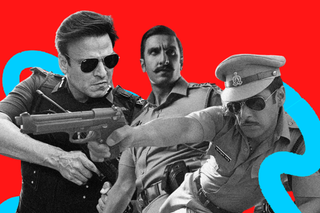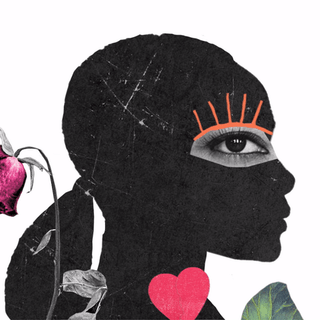
Why ‘Copaganda’ Makes For Bad Entertainment
An upcoming Hindi series called ‘Indian Police Force’ glorifies cops the way many other films have in the past — but the ideological undertones are sobering.

An upcoming web series promises to pay tribute to the “selfless service, unconditional commitment and fierce patriotism of our police officers across the country.” Helmed by Rohit Shetty, a director known for his “cop universe” of films, it is named Indian Police Force and stars Siddharth Malhotra, Shilpa Shetty, and Vivek Oberoi.
The series promises to join the ranks of others that make up the ‘copaganda’ genre of entertainment: popular media that valorizes the police for their excesses, and portrays them to be heroes of any given story. “…these one-dimensional displays actually do harm by presenting cops as being solely friends and allies to the public at-large,” notes Refinery29. The Indian pantheon of copaganda includes Dabangg, Singham, Simmba, among others — where flawed but lovable policemen are protagonists who jostle through crime, corruption, and some romance on the side, with much muscle-flexing ado. The genre is replete with rambunctious characters who uphold the policeman as an arbiter of justice at any cost — audiences are then primed to cheer on as they engage in encounter killings while custodial torture is played for laughs.
But when such scenes of state-sanctioned violence are glorified on screen, they can normalize police violence in real life that have real consequences. Films about the police — especially mass entertainers — tend to highlight the chauvinistic machismo of the police as bravado. The idea is that the ends justify the means — inevitably leading to the real–life normalization of extrajudicial violence. In crimes that are high on public emotion, such as rape, there is an even greater tendency to look to the police to take justice into their own hands, circumventing the law. This is what happened when many celebrated the encounter killing of men who were allegedly the rapists involved in a gang-rape in Hyderabad — but the key is that one can never be sure whether they were, indeed, the culprits. Even so, the public reaction to the incident was one of jubilation, much like audiences cheer a movie cop for finishing off the bad guys.
There’s an exceeding simplicity to the approach that copaganda takes which, when applied to real life, is dangerous at best, fatal at worst. Cop movies paint a black and white narrative of good and bad — justifying the use of excessive violence on “bad” people. “For an average Bollywood viewer, a police officer isn’t just responsible for maintaining law and order; he’s also meant to hunt down villains and take revenge,” notes The Quint. But the people who are villainized as such are on the receiving end of violence simply based on the cop’s own morality. And when cops are protagonists, we’re shown the version of reality from their point of view — leading to cheers when ‘bad’ people are harmed. What remains unquestioned in all this is how the police have a monopoly over the legitimate use of violence — they are armed with batons, tear gas, and even revolvers that they are empowered to deploy at will, with few (if any) formal consequences. They are not fighting the law; they are the law.
This, in turn, normalizes police brutality in real life, making it seem okay to use violence on people who are captured by the state as long as the ends are justified. The exceedingly high rates of custodial torture, then, go unnoticed — and there’s little empathy to be found for prisoners who often find themselves stripped of all their fundamental rights once in the custody of the police.
Related on The Swaddle:
Why Mumbai Police’s ‘Nirbhaya Squad’ Won’t Help Correct Rape Culture
Many individuals are often killed in this way — a statistic that would have alarmed us, had we not been so inured to the notion that the police have the right to do whatever they want, to whomever they want. Our collective acceptance of the role of police violence in society forms a bridge between how popular media deploys it for entertainment, and how real–life incidents betray a sadistic impulse behind some police actions. During the lockdown, for instance, the Indian police resorted to humiliation as a form of enforcing lockdown regulations — frog jumps, online shaming, and yoga were among the tactics they used. There’s a slapstick quality to these forms of punishments — they operate outside the law, and they carry an underlying impulse of cruel humor at someone else’s expense: exactly how the mainstream cop films depict it.
Copaganda can also take on more serious, seemingly more nuanced modes. Delhi Crime, for instance, attempted a serious portrayal of the capture of Nirbhaya’s rapists. It cements the indispensability of the police in the public’s minds: for a crime as horrific, the imagination extends only to the police in terms of how to address it. As Nadia Nooreyezdan noted in The Swaddle earlier, however: “While Delhi Crime is a fictionalized account of what happened, the choice to twist certain facts seems telling.” Indeed, the role of journalists, protestors, and students is lumped in with that of politicians with an agenda to push. A common theme running across copaganda, moreover, is the denigration of journalists as click-baity media with no scruples, juxtaposed against the righteous police who work against all odds. But this, too, serves an ideological function: it bolsters state power while eroding the credibility of the most important check to state power — the fourth estate.
Closer to reality, then, are dramas that show how the police really behave in light of their having nearly unchecked power. Jai Bhim, for instance, shows how custodial violence is disproportionately exercised against marginalized people as a form of exerting caste power. In contrast, Article 15 shows a ‘good cop’ to be deeply troubled by caste violence, ultimately overshadowing anti-caste revolutionaries in being the privileged caste savior who sounds the alarm on a phenomenon that, in real life, he would very likely actually be complicit in. Indeed, the rape and murder of a Dalit woman in Hathras and a 9-year-old girl in Delhi showed exactly this: the police was complicit in destroying evidence that would implicate upper caste men in the crime.
Indian Police Force then feels like a far cry from such nuance: it appears to package the police, once again, as “desi Hindustani action,” glorifying a force that is responsible for much systemic violence in the country.
Rohitha Naraharisetty is a Senior Associate Editor at The Swaddle. She writes about the intersection of gender, caste, social movements, and pop culture. She can be found on Instagram at @rohitha_97 or on Twitter at @romimacaronii.
Related


In Conversation: On the Professor Forced to Resign Over Bikini Pictures
